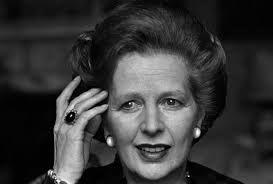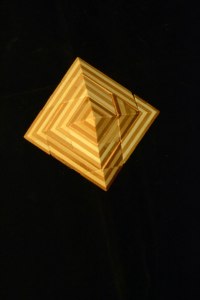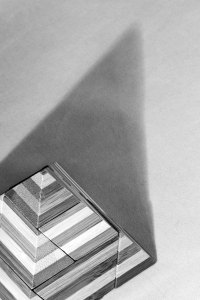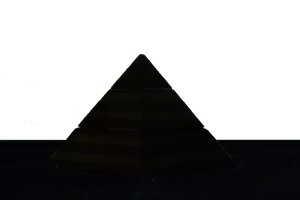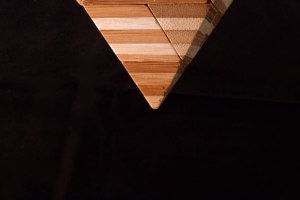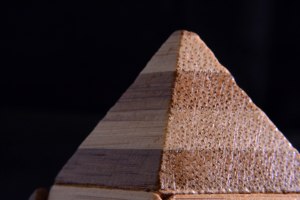I recently became aware of a photographer called Jane Bown. The Guardian wrote an obituary on her and it was such an interesting read. Having researched her images I realise I was aware of her work, but had never thought to research her. What a fascinating lady.
Here’s a few snippets from the article that really grabbed my attention and what i’ve perceived from it:
– She would very rarely use more than half a roll of film on a shoot. In the digital age I think we end up being too snap happy as we have limitless storage in the form of memory cards – in my most recent assignment i tried to limit the number of shots i took, and to really focus on how i want the final image to look.
– She would never prepare before a job, and would often have no idea who her subject was. She wanted to work with out any preconceptions. I found this really interesting – as a novice photographer I have done several bits of work to add to my portfolio, but I found myself frantically researching the night before! It implies that Bown was confident in the outcome of her work and knew exactly how to achieve this. I love the fact that she was not star struck in the slightest, and felt there was no need for her to know who the subject was. She was there for one reason – to photograph. Who or what she was photographing did not matter.
– She strongly believed that “photographers should neither be seen nor heard” Again this changed my view on how a photographer should work. We are taught that as the photographer you should engage the subject, talk to them to relax them in some cases and give them direction/angle instructions. While i’m sure Bown did this, she didn’t seem to bother much with idle chit chat. Also, on a photo-shoot you sometimes get the feeling that much of what is going on actually revolves around the photographer and equiptment etc as they are essentially running the show. The idea that you can produce stellar results by keeping a low profile is refreshing.
– She preferred using natural light and would ignore her camera’s built in light meter. She had clearly worked out a way of getting the results she wanted through using as little equipment as possible – what an inspiration! Sometimes I find myself relying on studio lighting through a fear of using the natural light provided.
– Her favourite and most commonly used camera setting was F.2.8 and 1/60th of a second. I love this fact about her 🙂 I’m also a big fan of using a low aperture number regarding portrait photography as it gives a soft blur around the subject and helps focus on the eyes (usually the focal point) She seemed so rigid in what she liked and disliked and i don’t think that is a bad thing at all.
– She wasn’t a fan of colour photography, claiming “colour is too noisy, they eye doesn’t know where to rest” I work in black and white a lot. I feel it has a more dramatic, artistic feel to it. I’m not adverse to shooting in colour at all and some of my own favourite pictures are colour shots, but I totally agree that with some colour images you’re not too sure where to be looking. I would have loved to know her thoughts on HDR photography…
– She liked to be at the same height or slightly higher than her subjects, and would circle them. Again, the idea of familiar shooting techniques, but one that resulted in her iconic style. I really like that she circled the subject – not missing a single angle. This is something i shall bare in mind.
– She found that “In laughter, people are often at their most natural.” I think this is totally summed up in her photograph of Mick Jagger. I’m usually drawn to pictures of smiling/laughing subjects as i feel it lets you see more of the individual. It highlights something in the eyes.
– She never trusted 1/1000th of a second, and never used it. I’m intrigued at this. I would love to know WHY she never used it. I’ve submitted several assignment shots where i used this shutter speed and found it to be a god send when without a tripod!
What a fascinating lady. I’m off to set my camera to F.2.8 1/60th 🙂

“Throughout her long career as an Observer photographer, Jane Bown, who has died aged 89, produced a consistent and singular body of work that straddled many areas of photojournalism. However, she will be remembered above all for her deeply insightful portraits.
By the time Jane began working at the Observer in 1949, her trademark style – a unique capacity to blend the iconic with the informal – was already fully formed. Her account of the first Observer commission, which was a portrait of the philosopher Bertrand Russell, is classic Jane: concise, self-deprecating and modestly assured. “I was terrified, I don’t think I even knew who he was,” she said. “But the light was good …”

Jane claimed that she never intended to become a portrait photographer, that this happened because of her reputation for working rapidly and without any fuss. But her speed was the result of an extraordinary technical acuity due to the rigorous training she received in the years after the second world war. Her gender, diminutive stature and minimal camera equipment enabled Jane to put her subjects at ease. Deeply intuitive, she worked quickly because she knew that the best photographs were those in which she was able to capture the initial spontaneity of her subject.

An ideal shoot was one where she exposed no more than a roll and a half of film, often in just 15 minutes. Once she cornered the notoriously camera-phobic Samuel Beckett in a dark alleyway down the side of the Royal Court theatre in London as he tried to escape her lens. With simmering hostility, he stood long enough for Jane to expose five frames – the middle one is one of her most recognisable portraits and the best portrait of the playwright. The vast rollcall of other images includes figures as diverse as Jean Cocteau, the Queen, Mick Jagger, Jayne Mansfield, Rudolf Nureyev, Björk, John Betjeman, Sinéad O’Connor, the Beatles, Francis Bacon and Spike Lee.

Working for the Observer suited Jane’s temperament. The relatively relaxed pace of a Sunday newspaper allowed her to combine a career with a full family life at home – Jane always travelled to London once a week for two days’ work.
It was David Astor, the renowned Observer editor (1948-75), who recognised and fostered Jane’s talent. He often sought her out at the office to inquire about a particular subject, clearly valuing her insight. His successor, Donald Trelford (1975-93), referred to Jane as a “white witch” for her uncanny ability to capture, time and again, a psychologically insightful portrait. She worked with all of the great Observer writers – Patrick O’Donovan, Terence Kilmartin, Lynn Barber, Katherine Whitehorn, Polly Toynbee, Kenneth Tynan, Philip Toynbee, Nora Beloff, John Gale, Anthony Sampson.
Andrew Billen, who worked with her for many years in the 1990s, said that she did no preparation whatsoever for a shoot and more often than not would have no knowledge of her subject. I once took a call from Jane asking me if I’d ever heard of “a Mr Jarvis Cocker” whom she had been asked to photograph. I am convinced that this ignorance was, at least partly, wilful: to arrive in a strange environment and be presented with a complete stranger without any preconceptions on her part must have been wonderfully liberating and creatively stimulating. And this might also explain the extraordinary humanity of her work, the same grace and reserve invoked whether photographing a head of state or a turnip.

Jane was very reluctant to explain how she worked – her favourite mantra was “photographers should neither be seen nor heard”. But this did not mean that she would not emerge from the margins if the situation demanded it. A Robin Williams shoot in a hotel room in central London was going disastrously: the interview had run over, there was little or no time for the portrait, and Williams was bouncing around the place amusing the numerous publicity people and assistants. An immediate silence descended when Jane said: “I’m very sorry, Mr Williams, but I don’t have time for this.” Suitably chastened, Williams posed, meekly as a cat, and Jane was very amused to hear that he did an impeccable impersonation of her once she had left.
Her main preoccupation on any shoot was the light. She enjoyed it when there was a “spark” with the sitter, but it was by no means necessary for her to produce startling results. Throughout much of her career, Jane went along as second fiddle to the interviewer, often being squeezed in for a few minutes at the beginning or at the end. Sometimes subjects were happy to be photographed while they were interviewed – the famous picture of a laughing Mick Jagger was captured this way – but her preference was to have her subject’s undivided attention.

Her personal attitude to the person is never evident in the work. She photographed Margaret Thatcher in Downing St while she was prime minister. In frame after frame, Thatcher meets Jane’s gaze head-on, the public persona as impenetrable as armour. And then, in a brief moment, Thatcher reached up to re-position a coil of hair and Jane pounced, capturing the fleeting doubt that lingered around the corners of the eyes.
Jane also photographed Tony Blair when he was about to become prime minister in 1997. Looking at the contact sheets it is clear that she struggled. When I asked her about it she replied: “It was impossible … he was nice and he allowed me to follow him upstairs so that he could try on a different shirt.” When I pressed further, she scrunched up her face trying to remember the day and eventually said: “It was impossible, because there was nothing real there.”
In stark contrast to her mostly male peers, Jane was supremely uninterested in camera equipment. With some reluctance, she abandoned her beloved Rolliflex in the early 60s, first migrating to a 35mm Pentax before settling on the OIympus OM1 – she owned about a dozen Olympus cameras, all bought secondhand. Throughout her career she referred to herself as a “hack”, and even when her reputation was at it height, she always deferred to the picture editor. She worked almost exclusively with natural light and ignored the camera’s in-built light meter, preferring instead to hold a clenched fist away from her body to see how the light fell on the back of her hand. In fact, Jane once admitted to me that her preferred setting was f2.8 at 1/60 second and that she would, if at all possible, conspire to make the environment work at this setting – indirect sunlight from a north-facing widow would usually achieve it.
Jane tried colour in the mid-60s – largely in response to the launch of the Observer colour supplement – but abandoned it after three years, finding the medium too inflexible. But I think her true motivation had more to do with aesthetics – using available light to dramatise the subject with the infinite gradations of grey between pure black and white provided the subtlety that was her stock in trade. “Colour is too noisy,” she once said. “The eye doesn’t know where to rest.”

Jane maintained that taking portraits was not what originally motivated her: “I was never really interested in people; that came later. I was always happiest moving about seeing things … still am.” This had a lot to do with her painful shyness as an adolescent, the result of a complicated upbringing. This shyness bred an extraordinary lack of ego and with it a fundamental understanding of the predatory nature of photography.
A book of Jane’s early, pre-portrait work, The Unknown Bown (2007): reveals a technical virtuosity and an innate understanding of the principles of good composition. Many of her best pictures involved a single exposure and she once remarked: “I was always a one-shot photographer … where I’m good is that I am very quick.” There are numerous abstract shots – a leek close up; net sheds at Hastings; graffiti on a wall; part of an plane at Farnborough. Where people do figure, they are, for the most part, taken surreptitiously from the side or back. Only children look directly into the camera. In the introduction to this book, Germaine Greer wrote: “If we are to assess the best of her photojournalism it is to Cartier-Bresson that we must turn to find her soulmate.”
Jane’s early childhood was very happy. She was brought up in Dorset by women whom she regarded as her aunts. Everything changed when, aged 12, Jane realised that one of these, her favourite, was in fact her mother, Daisy. Much later, she learned that Daisy, a nurse, had become pregnant by a patient, Charles Wentworth Bell, who was dying, and that she had been born in Eastnor, Herefordshire.
The deception about her birth scarred Jane deeply. Over coffee one day, when she was about 75, she recounted the sad, sorry tale of her upbringing and how it had affected her – how she became a delinquent in her adolescent years and how badly she had treated her mother. It was clear that the intervening 60 or so years had done very little to numb the extreme hurt she had experienced as a child. She talked of how, as a teenager, she would latch herself on to families; in her early pictures, many seemingly happy families are viewed sideways or from behind.
During the second world war she became a chart corrector with the WRNS (1944-46), and on being demobbed she was entitled to an education grant. One of her fellow servicewomen suggested photography. Jane was accepted on to the UK’s only full-time photography course at the time, run by Ifor Thomas at the Guildford School of Art in Surrey. Jane’s shyness was such that Thomas almost gave up on her, but when she returned from an assignment one day with a close-up study of a cow’s eye, he immediately recognised that she possessed a serious talent.
The economy characteristic of those years informed everything about her – the way she dressed, her reserved speech, the pared-back working method, the attitude to equipment, the reluctance to talk about her work. It became the cornerstone of her practice, removing all distraction, infusing the finished work with a singularity and focus that borders on purity.

On a number of assignments towards the end of her career – her frailness forced her to relax an absolute ban on extraneous people – I was lucky enough to go with her. She arrived early to identify the best source of light, load both cameras, and check the lenses (she favoured a 50mm and an 85mm). Like an artist using found objects, she accepted the confines of the immediate environment rather than trying to adapt it; she rarely employed props.
When the subject arrived, Jane engaged in light banter, a kind of verbal screen which hid her as she scanned the face in front of her. She was well aware of how to exploit a sitter’s bemusement when confronted by this short-of-stature figure speaking in clipped sentences with a posh accent. She was naturally humorous and enjoyed making people laugh – she understood that in laughter, people are often at their most natural. Jane herself laughed gently, the mirth most visible in and around her eyes.
She liked to be at the same height or slightly higher than her subjects: given her diminutive stature, this sometimes led to unorthodox requests – Michael Parkinson reclining on the floor of ITN’s reception; Björk perched on rubbish bins outside the MTV studios in Camden Town. Then she would begin to circle the subject, gently clicking all the time. She knew instinctively if she had captured a good frame and would often say: “Ah, there you are.” Jane liked nothing better than to concentrate on the eyes, often using such a limited depth of field that one of the subject’s eyes is slightly out of focus.
In a film about her life and work, her son Hugo talked of his mother’s dual personality: at home in the country she was known as Mrs Moss and on the train to London she became Jane Bown. In 1954 she married the retail fashion executive Martin Moss, who later became director of the retail wing of the National Trust, a member of the Design Council and a member of the council of the Royal Society of Arts.
Even after she could no longer take photographs, Jane visited the Observer office each week, finding it difficult to relinquish her lifelong pattern. At home, Jane’s portraits were nowhere to be seen in the public rooms. She preferred to relegate them to a back room or outhouse, a kind of secret space with a single chair where she could go and sit with the pictures all around her on her own.
She loved seeing her work in the pages of the Observer each Sunday, but I am convinced that it was the taking of the picture that gave her the real and intense and private pleasure. As she said herself, “For that second when I look through the lens I absolutely love the sitter … And then I’m gone.”
Jane was appointed MBE in 1985 and CBE in 1995. Martin died in 2007, and she is survived by her three children, Matthew, Louisa and Hugo.
Luke Dodd
Eamonn McCabe writes: Nobody has taken so many wonderful photographs of so many great faces with such little fuss as Jane Bown. She was a reluctant star, hating the attention of being well-known herself. She hated being photographed too. I was lucky she trusted me, but she watched me like a hawk when I photographed her at 80. She photographed the Queen that year and I photographed the queen of photography.
I worked alongside her at the Observer for nearly 15 years and she was as nervous as the rest of us every time she went out to take a picture, but unlike many of us, she prepared meticulously. Light was the most important thing in her life. She never used flash, probably didn’t know how it worked. If it was a dark day she would grab the picture editor Gary Woodhouse’s Anglepoise and set out – on the bus.
Jane hated fresh chemicals. I often went in on a Tuesday to discover the developer in my tank had gone down. She would let me use it fresh, which was good for sports photography, and then, after a few weeks, when I was about to throw it away, when it was all brown and oxidised and you wouldn’t even put your hand in it, let alone your precious films, she would take it over.
Another thing she didn’t trust was a 1/1000th of a second. Even on a bright day and when her meter read 1/1000th of a second she would never use it … I can still hear her saying: “I just don’t like it.”
Her great friend and another respected photographer on the Observer, whom I had the privilege to work along side, was the cravat-wearing Neil Libbert. They would often be found in the wine bars around St Paul’s at lunchtime, gossiping and chatting about photography, their great passions in life. She was a mean cricketer, often scoring plenty of runs in impromptu games at her house in Alton, Hampshire, on lazy Sunday afternoons with her Observer friends.
If you look at many of Jane’s pictures, the subject is often smiling and relaxed. That was because they were often taken after a long lunch, at which Jane would never drink, and shot by a light-filled window. But the real reason was that they all loved Jane. I often see her kind of picture when I look through a lens now, and think to myself, I can’t take that … it’s a Jane Bown.
• Jane Hope Bown, photographer, born 13 March 1925; died 21 December 2014

